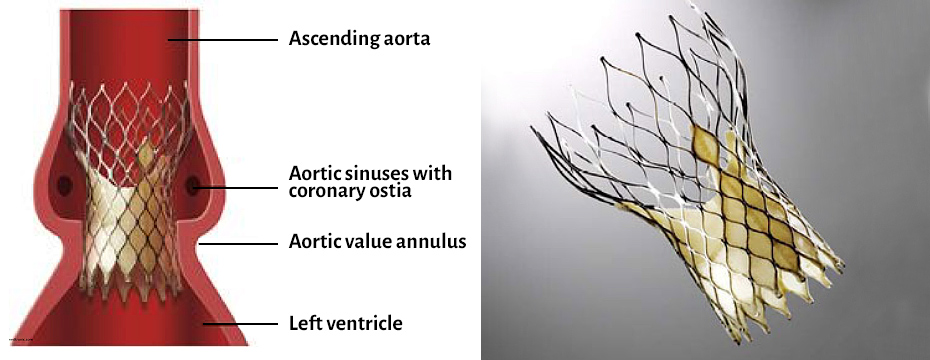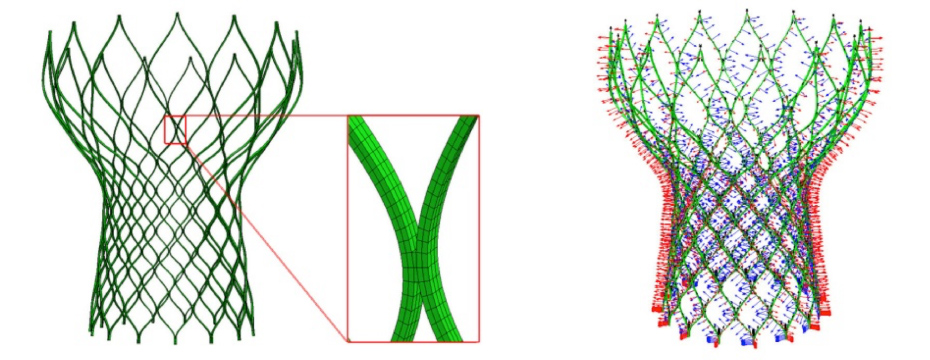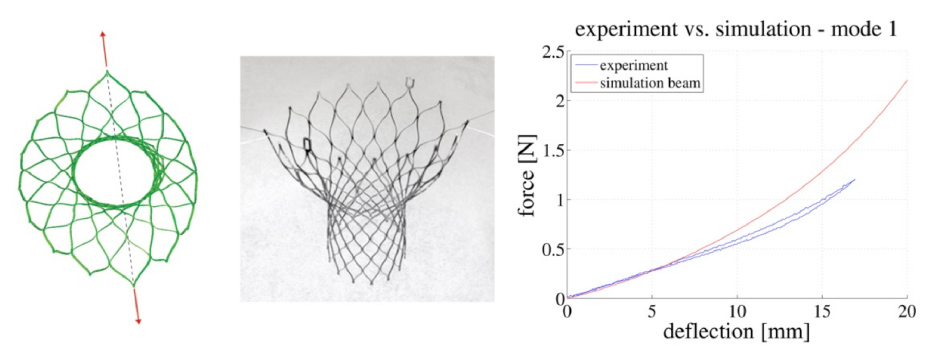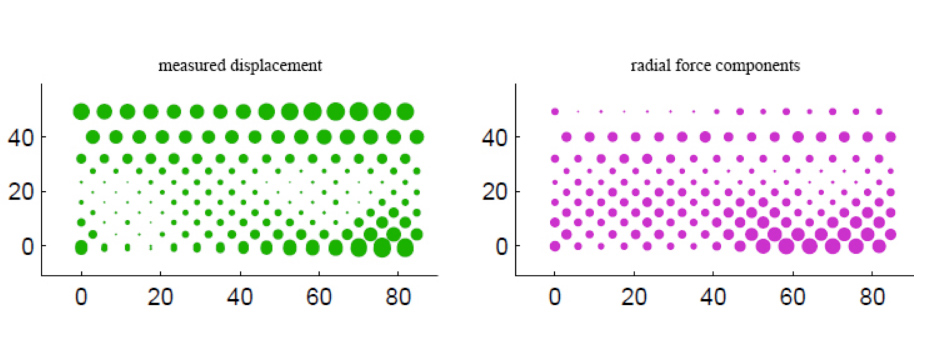Stent Induced Loading of the Aortic Valve Complex
1. Medical Background and Goals
The aim of this project is to develop a procedure that allows the reconstruction of the force fields acting between implant and surrounding tissue for individual patients after TAVI and then compare these forces with the clinical outcomes. This is achieved by using a structural finite element model of the stent and medical imaging such as postoperative CT-scanning in order to obtain the deformation field which then can be converted into kinematic boundary conditions for setting up a finite element simulation.
As the exemplary aortic stent used for this study, the Medtronic CoreValve® Revalving System is selected. The CoreValve stent is made out of the super elastic shape-memory alloy known as nitinol. This nickel-titanium alloy has the ability to recover elastically from larger strains in ranges of about 8%. This property is used for deployment and ensures that the stent is able expand itself after release.
In the past ten years a new way of aortic valve replacement has been introduced. Transcatheter aortic valve implantation (TAVI) makes use of stenting and is therefore a minimally invasive procedure. The new valve is attached to the stent, deployed as a stent-valve system and placed inside the dysfunctional aortic valve. Knowledge about the contact forces between the medical implant and its surrounding tissue can provide essential information on the overall performance of the implant.

2. The Finite Element Models
For investigative purposes two models were developed: A three dimensional solid element model and a model consisting of structural beam elements. Global load cases were defined and used to implement a convergence analysis of the volume model and eventually compared to the beam model. Further, experiments are performed in the form of two point tensile tests and then compared to the corresponding simulation.

3. Patient Specific Simulations
Due to relatively high uncertainty of the CT-scanning data, the extracted deformation fields cannot be directly applied to the stent model as kinematic boundary conditions. The high ratio of local radial vs. axial and tangential stiffness would lead to extremely high noise amplification in undesired directions. Therefore a system consisting of nonlinear force elements is introduced in order compensate for these problems. Finally, force fields can be computed for every individual patient and mapped to plots in three dimensions or unwrapped stent domains, with x- and y-axes corresponding to the geometric dimensions of the stent and the radial forces proportional to the size of solid circles in the map.


Project Lead
Dr. Raoul Hopf
Partners
- Prof. Dr. med. Volkmar Falk, Division of Cardiovascular Surgery, USZ
- Dr.-Ing. Michael Gessat, Universität Zürich
- Dipl.-Ing. Christoph Russ, Department of Information Technology and Electrical Engineering, ETH
- Prof. Auricchio, Universita’ di Pavia